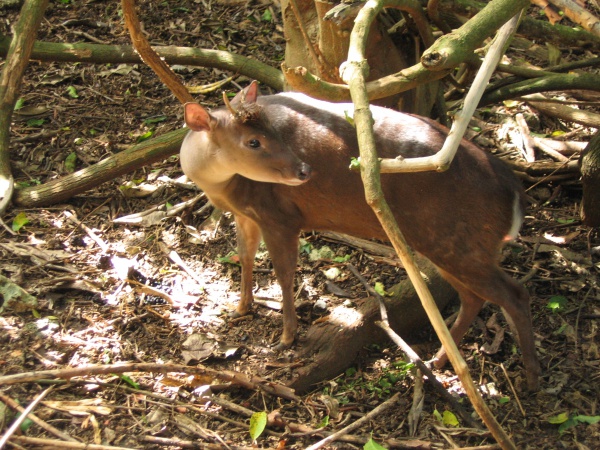Facts About Red brocket
The red brocket is a species of deer inhabiting forests throughout South America, ranging from northern Argentina to Colombia and the Guianas, and even extending to the island of Trinidad. Due to ongoing taxonomic uncertainties, the International Union for Conservation of Nature (IUCN) has classified it as “data deficient.” Despite this ambiguity, the red brocket remains the most prevalent among brocket species, frequently sharing its habitat with the smaller Amazonian brown brocket.
This deer is easily distinguishable by its reddish-brown body, contrasted with a lighter grayish-brown head and neck, blackish legs, and white inner thighs and the underside of its tail. The fawns, or young deer, are characterized by their white spots and lack of blackish legs. Only the adult males develop small, spike-like antlers. Notably, the red brocket is the largest of the brocket deer, standing 26 to 31 inches tall at the shoulder and measuring 41 to 57 inches in body length. Their weight typically ranges from 53 to 106 pounds, although some males can reach up to 143 pounds.
Red brockets primarily feed on plants, with a preference for fruit when available. They are generally solitary and favor residing in dense jungles. When sensing danger, they might snort or stamp their hooves. Intriguingly, studies on their chromosomes reveal some variations, suggesting the possibility of different, unrecognized species within the currently recognized red brocket group.

 Panama
Panama